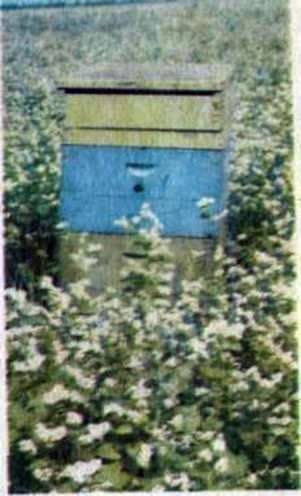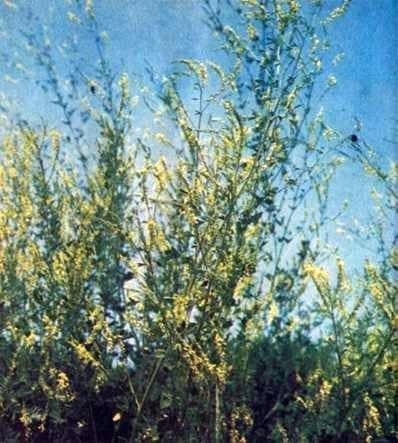
For beekeeping are of exceptional value and field crops, especially buckwheat and sunflower.
A buckwheat field is a white ocean of inflorescences. And above it a thick honey smell. More than a month this valuable cereal culture blossoms. Buckwheat has long been known as a good honey plant. In the period of its mass flowering, bee colonies bring in a day 5-6, and even 8 kg buckwheat nectar. “With buckwheat,” says the beekeepers, “without a misfire.” The bees are almost in every inflorescence. They collect nectar and pollinate plants. Without cross pollination, buckwheat does not bind seeds. In each grain laid the work of winged agronomists. Eat buckwheat porridge – do not forget to praise and the bee.
Flowers of buckwheat produce nectar mainly at night and in the morning. Therefore, the bees are working intensively on the buckwheat field until noon. And in the second half of the day you will hardly see them there. Dark buckwheat honey with a special flavor and aroma can not be confused with any other. It gives a peculiar taste to gingerbread and carpets, in which buckwheat honey is specially added. It contains many micronutrients, so it is considered very useful. With good weather and sufficient humidity during the flowering time, buckwheat families collect 50-60 kg of honey.
These plants give honey.

Flowers give bees food – nectar and pollen, and bees as pollinators, as if in gratitude, help them to bear fruit.
The hairy, densely covered body of a bee and its legs are adapted to capture a multitude of tiny, few microns, dust and do not lose them during the flight. The beetles of bees, its length and structure give an opportunity to get nectar from nectaries, wherever they are located – on a pistil or sepals, on the peduncle or at the base of stamens.
It is noteworthy that plants secrete nectar at a time when pollen ripens and anthers burst. Nectar they attract, as it were, entice insects, which transfer pollen from flower to flower and thereby provide pollination.
Bees equally skillfully work on any form of flowers: on hazelnuts, dandelion inflorescences, baskets
Sunflower, clover heads, drooping linden brushes. Plants and honey bees are well adapted to each other. Among a huge number of species of flowering plants there are those that give off a lot of nectar. Beekeepers call them the main medonos. From them, bees harvest their honey in the reserve.
Ранний медонос. Пчелы не берут сироп весной.
Young Beekeeper